Falah Awwad
Continual Learning with Neuromorphic Computing: Theories, Methods, and Applications
Oct 11, 2024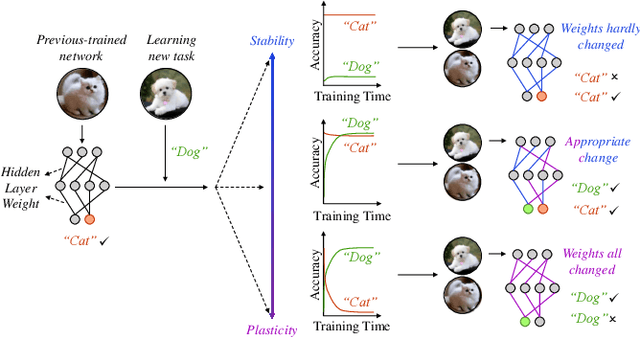
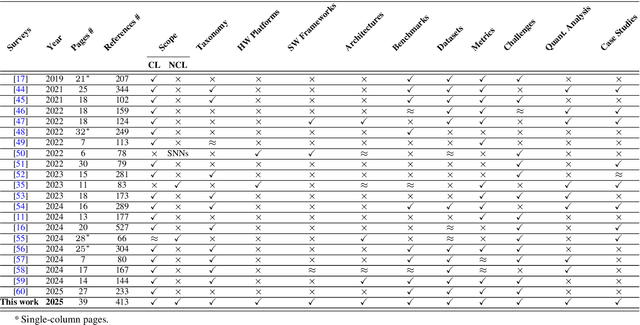

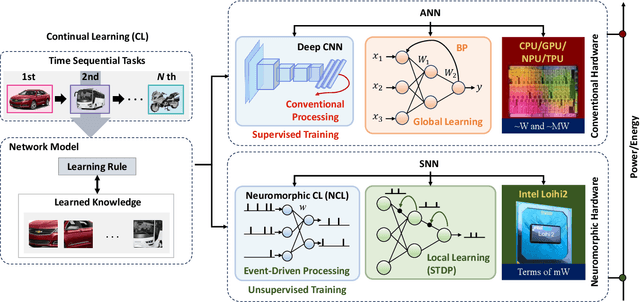
Abstract:To adapt to real-world dynamics, intelligent systems need to assimilate new knowledge without catastrophic forgetting, where learning new tasks leads to a degradation in performance on old tasks. To address this, continual learning concept is proposed for enabling autonomous systems to acquire new knowledge and dynamically adapt to changing environments. Specifically, energy-efficient continual learning is needed to ensure the functionality of autonomous systems under tight compute and memory resource budgets (i.e., so-called autonomous embedded systems). Neuromorphic computing, with brain-inspired Spiking Neural Networks (SNNs), offers inherent advantages for enabling low-power/energy continual learning in autonomous embedded systems. In this paper, we comprehensively discuss the foundations and methods for enabling continual learning in neural networks, then analyze the state-of-the-art works considering SNNs. Afterward, comparative analyses of existing methods are conducted while considering crucial design factors, such as network complexity, memory, latency, and power/energy efficiency. We also explore the practical applications that can benefit from SNN-based continual learning and open challenges in real-world scenarios. In this manner, our survey provides valuable insights into the recent advancements of SNN-based continual learning for real-world application use-cases.
MacLeR: Machine Learning-based Run-Time Hardware Trojan Detection in Resource-Constrained IoT Edge Devices
Nov 21, 2020
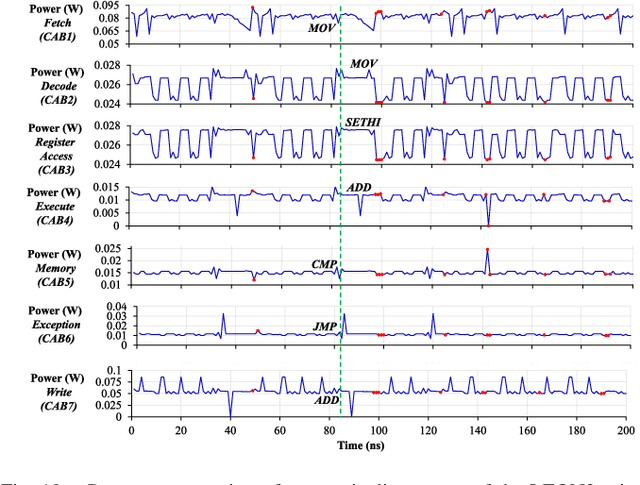
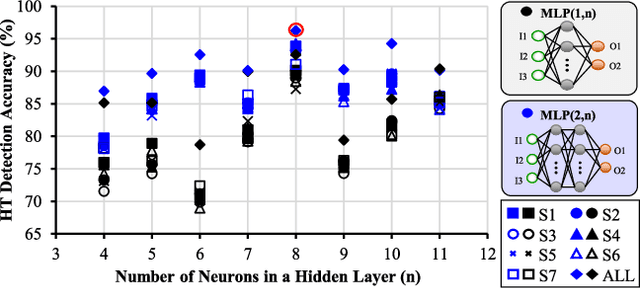
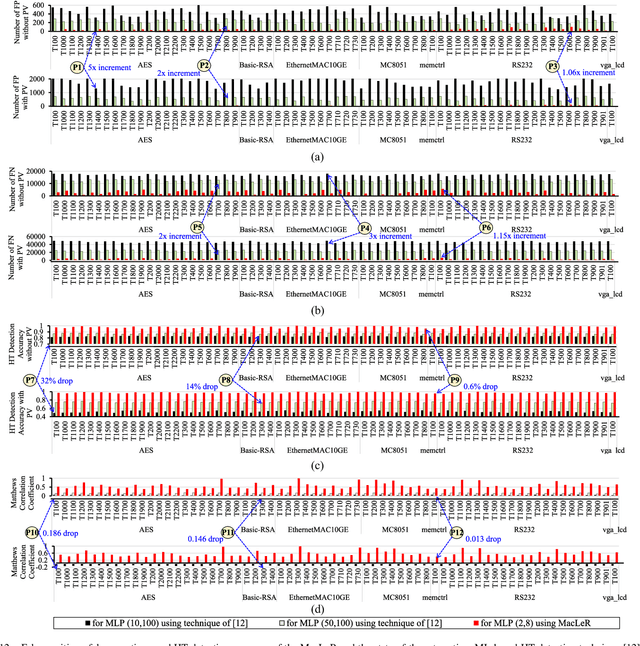
Abstract:Traditional learning-based approaches for run-time Hardware Trojan detection require complex and expensive on-chip data acquisition frameworks and thus incur high area and power overhead. To address these challenges, we propose to leverage the power correlation between the executing instructions of a microprocessor to establish a machine learning-based run-time Hardware Trojan (HT) detection framework, called MacLeR. To reduce the overhead of data acquisition, we propose a single power-port current acquisition block using current sensors in time-division multiplexing, which increases accuracy while incurring reduced area overhead. We have implemented a practical solution by analyzing multiple HT benchmarks inserted in the RTL of a system-on-chip (SoC) consisting of four LEON3 processors integrated with other IPs like vga_lcd, RSA, AES, Ethernet, and memory controllers. Our experimental results show that compared to state-of-the-art HT detection techniques, MacLeR achieves 10\% better HT detection accuracy (i.e., 96.256%) while incurring a 7x reduction in area and power overhead (i.e., 0.025% of the area of the SoC and <0.07% of the power of the SoC). In addition, we also analyze the impact of process variation and aging on the extracted power profiles and the HT detection accuracy of MacLeR. Our analysis shows that variations in fine-grained power profiles due to the HTs are significantly higher compared to the variations in fine-grained power profiles caused by the process variations (PV) and aging effects. Moreover, our analysis demonstrates that, on average, the HT detection accuracy drop in MacLeR is less than 1% and 9% when considering only PV and PV with worst-case aging, respectively, which is ~10x less than in the case of the state-of-the-art ML-based HT detection technique.
 Add to Chrome
Add to Chrome Add to Firefox
Add to Firefox Add to Edge
Add to Edge